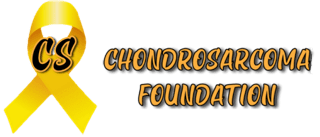What is Chondrosarcoma
What is Chondrosarcoma?
Resource: Johns Hopkins Medicine (www.hopkinsmedicine.org)
Chondrosarcoma is a rare form of bone cancer that develops in cartilage cells, particularly that of the femur, arm, pelvis, knee, and ribs. The exact cause of Chondrosarcoma is not known. There may be a genetic or chromosomal component that makes certain people more likely to develop Chondrosarcoma.
Symptoms & Diagnosis of Chondrosarcoma
The symptoms of Chondrosarcoma may vary widely according to the location of the affected cells and tumor. Patients can experience symptoms differently, but commonly reported symptoms include:
- Local swelling in the affected area
- Large tumorous growth on the affected bone
- Feeling of pressure around the tumorous growth
- Gradually increasing pain in the affected area. It is usually worse at night and may be relieved by taking anti-inflammatory medicines, such as ibuprofen. Unfortunately, this pain is not usually relieved through rest.
Chondrosarcoma can be diagnosed through the following methods:
- Biopsy
- X-ray
- Computed tomography scan (also called a CT or CAT scan)
- Magnetic resonance imaging (MRI)
- Positron emission tomography (PET) scan
Treaments of Chondrosarcoma
Treatment strategies for Chondrosarcoma rely on the removal of the tumorous mass and reducing the likelihood it will return. Treatment attempts can include any combination of the following:
- Surgery – Removal of the tumor. If the tumor is on an arm or leg, the surgeon will try to save the limb. In some cases, amputation might be needed.
- Physical therapy – This treatment helps to regain strength and use of the affected area after surgery.
- Radiation therapy – Radiation might be given at high doses.
- Chemotherapy – Although not the primary treatment, chemotherapy may be needed if the cancer has spread to other areas of the body.





